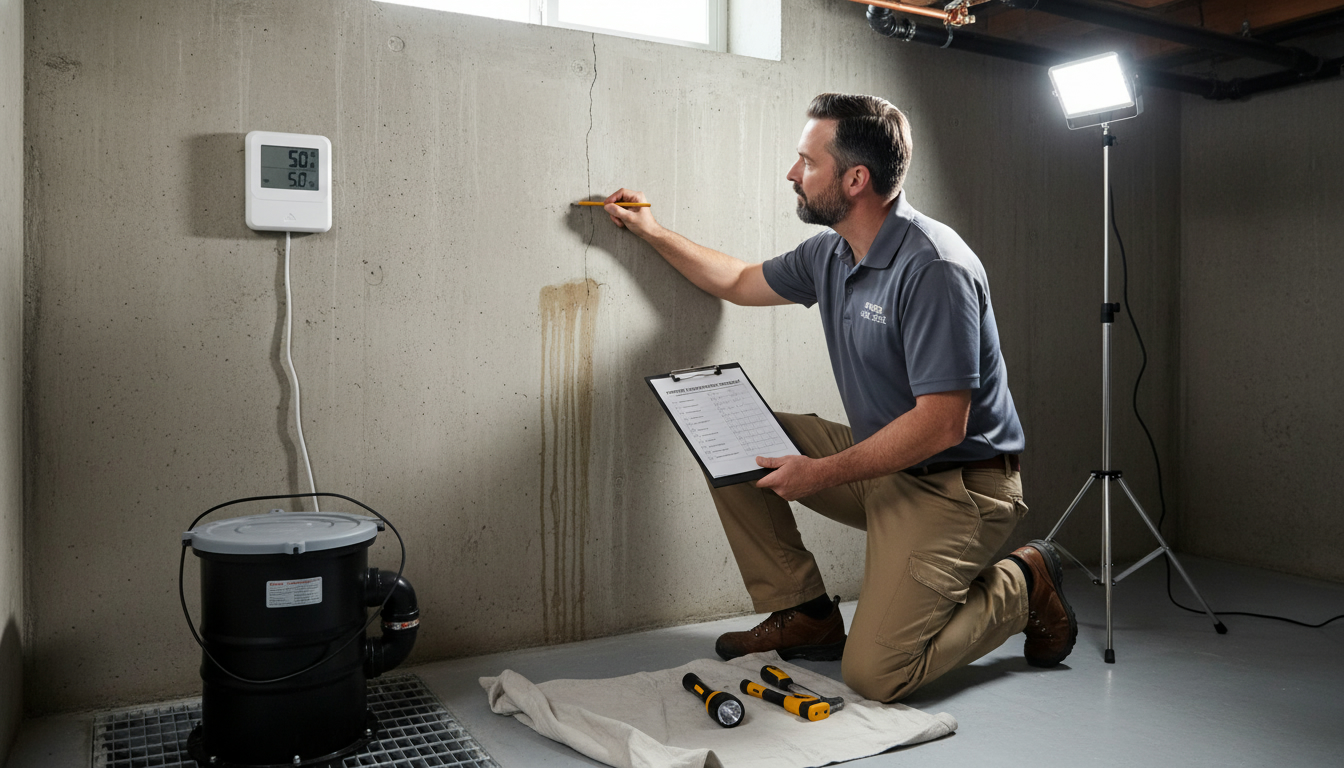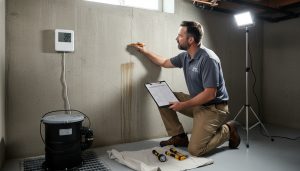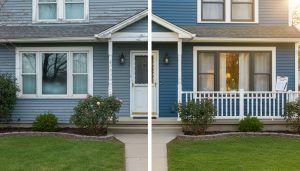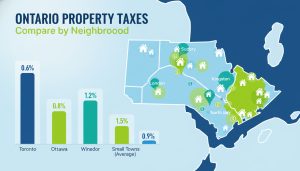How do I evaluate basement waterproofing?
Stop guessing: The 6-step checklist that tells you fast if your basement waterproofing is working — or costing you money.
Why basement waterproofing matters now
A wet basement destroys value, causes mold, and sinks deals. You need a clear method to evaluate waterproofing so you can act fast. This guide gives a practical, step-by-step inspection you can do right now. No fluff. No confusion.
Quick overview: What to look for
Look for active leaks, past water marks, wood rot, mold, efflorescence (white powder), and peeling paint. Check grading, downspouts, sump pumps, and interior drainage. If you find any of these, don’t delay.

6-step evaluation checklist (do this in order)
- Visual scan (5–10 minutes)
- Walls: hairline vs. wide cracks, bulging, or displacement. Wide or offset cracks = structural or footer drain failure.
- Floor: standing water, damp spots, or paint bubbling.
- Ceiling and joists: signs of rot or water stains.
- The plastic sheet test (24 hours)
- Tape a 2×2 foot clear plastic sheet to the concrete wall or floor. If moisture forms under the sheet after 24 hours, moisture is coming through the concrete.
- Sump pump and drainage check
- Locate the sump. Pour water into the pit; pump should activate and drain quickly. Test battery backup. Replace pumps older than 7 years or without backup.
- Exterior check (5–15 minutes)
- Grading: soil should slope away at least 6″ in the first 10 feet.
- Gutters/downspouts: ensure downspouts extend 4–6 feet away. Clogged gutters cause overflow right against the foundation.
- Smell and mold inspection
- Musty odors, visible mold, or high humidity indicate chronic issues that need both waterproofing and drying solutions. Use a simple humidity meter (45%–55% ideal).
- When to call a professional
- Active leaks, large horizontal cracks, foundation displacement, sewage backups, or persistent humidity despite fixes.
- Get a written diagnosis and prioritized fixes (stop source first, then repair).
Typical repair options and rough cost ranges
- Simple interior sealant/epoxy: $200–$1,000
- Sump pump replacement with backup: $500–$2,000
- Interior French drain with sump: $2,000–$8,000
- Exterior excavation and membrane: $5,000–$20,000
Costs vary by region and severity. Always get 3 written bids.
Red flags that kill deals
- Active leaks during inspection, exposed soil near foundation, multiple contractors offering different diagnoses, no warranty in writing.
What to ask any contractor
- What is the root cause? Provide photos and diagnostics.
- Is this interior or exterior work? Why?
- Do you pull permits? Is work inspected?
- Written warranty and transferability?
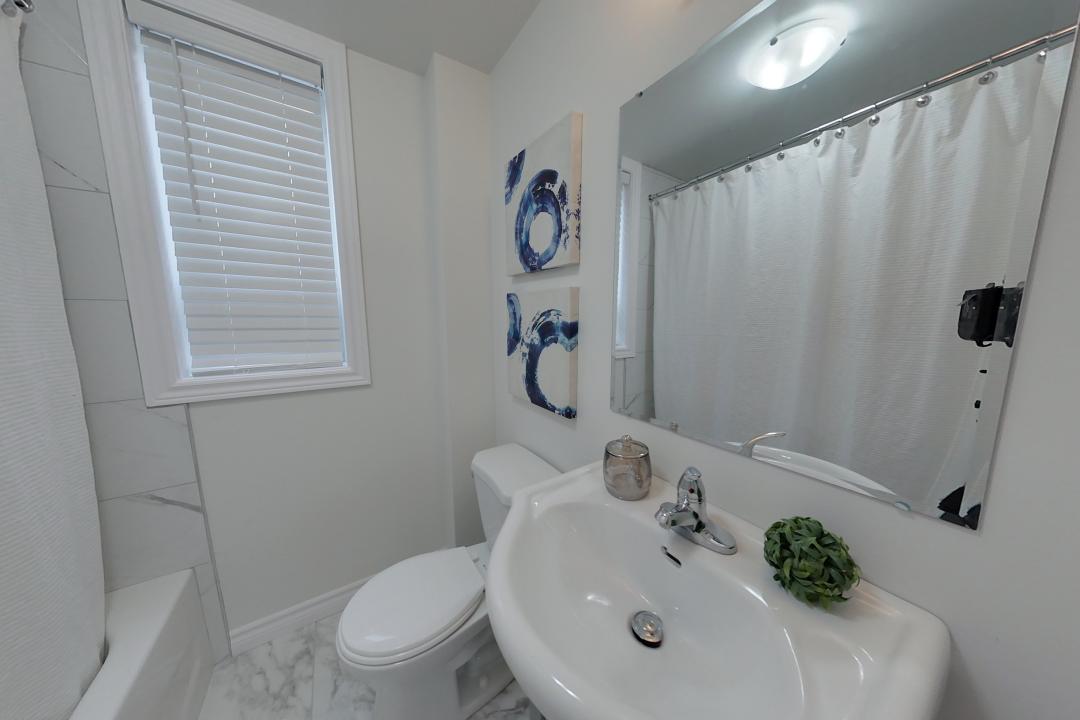
Bottom line — how I help you decide fast
I evaluate basements for buyers and sellers with a focused inspection checklist and clear action plan. If you want a fast, no-nonsense assessment and a prioritized bid list, contact me for a walk-through and written report.
Tony Sousa — Local Realtor & Basement Evaluation Advisor
Email: tony@sousasells.ca | Phone: 416-477-2620 | https://www.sousasells.ca

